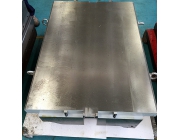

Longmen processing 02

Longmen processing 03

Longmen processing 04

Longmen processing 05

Longmen processing 06

Longmen processing 07

Longmen processing 08

Longmen processing 09

Longmen processing 01

Processing center of small proc

Processing center of small proc

Processing center of small proc

Processing center of small proc

Processing center of small proc

Processing center of small proc

Processing center of small proc


 for example, high rotary parts are required; the requirements mentioned here include precision requirements and surface roughness requirements. Because the CNC lathe is far from the ordinary lathe in the manufacturing and the precision of the tool, the precision of compensation and the rigidity of the machine tool, it is necessary to process the parts with high precision on the CNC lathe. Especially for the parts with high requirements for the busbar straightness, roundness and cylindricity, the turning movement of the CNC lathe has passed the high precision interpolation operation and the servo drive, so the machining precision can be realized well and the precision requirements of the parts can be met.
for example, high rotary parts are required; the requirements mentioned here include precision requirements and surface roughness requirements. Because the CNC lathe is far from the ordinary lathe in the manufacturing and the precision of the tool, the precision of compensation and the rigidity of the machine tool, it is necessary to process the parts with high precision on the CNC lathe. Especially for the parts with high requirements for the busbar straightness, roundness and cylindricity, the turning movement of the CNC lathe has passed the high precision interpolation operation and the servo drive, so the machining precision can be realized well and the precision requirements of the parts can be met. 